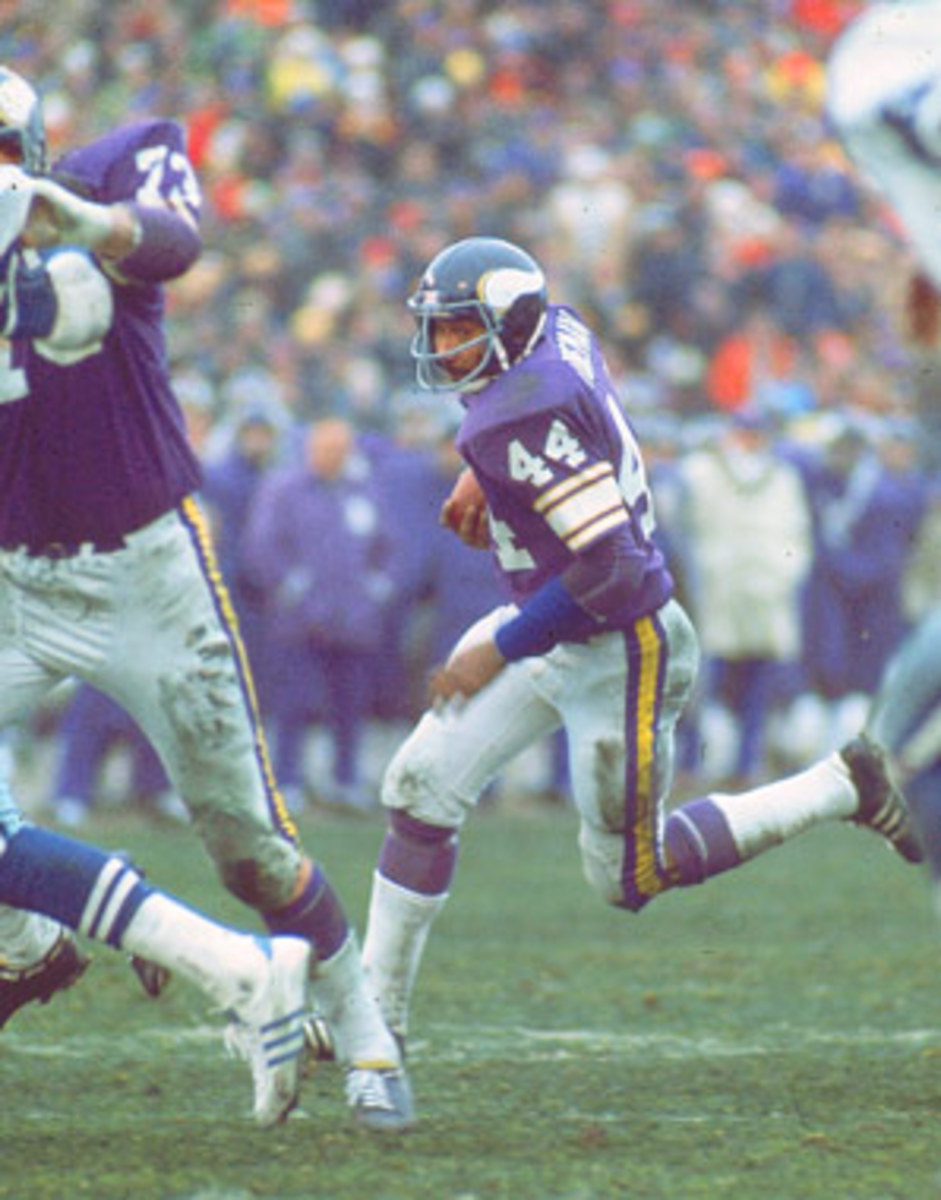The long, cold and sordid history of the Minnesota Vikings
For the first and more successful half of their history, the Minnesota Vikings were owned, in part, by the perfectly named Max Winter. It's as if the Baltimore Orioles were owned by Major Humidity or the Pittsburgh Pirates were owned by General Indifference. Winter remained on the Vikings' board of directors until he was 86, which was appropriate, for the team's greatest asset, during its greatest era, was Old Man Winter. And we're not talking about Max now.
As the Vikings play out the string on another disappointing season -- the 50th in franchise history -- it seems impossible that their first 21 years of home games were played outdoors, in frigid temperatures, for a coach who dressed in December as if it were August. Bud Grant prohibited sideline heaters, was fond of short sleeves and looked -- with his white hair and ice-blue eyes -- like winter itself.
Every year at playoff time, the Los Angeles Rams arrived in Minnesota, exotic creatures from Southern California -- half man, half tan -- who would instantly melt before their sideline space heaters and the withering gaze of a flip-flopped, tank-topped Grant. (At least that's how I remember it.) Then the Vikings would play a Super Bowl in some sunlit Southern hothouse and spoil like lunchmeat. But still: Those four Super Bowl appearances all came in the first 21 years of al fresco play in Minnesota.
This isn't to say that the Vikings' chronic underachievement in the last 29 years owes entirely to the fact that they moved indoors in 1982. (Two of the last four Super Bowl winners play indoors.) Nor is it to say that playing in the cold is a guarantee of Super Bowl success.
But the move indoors did transform the Vikings from intimidating to intimidated. The popular image of the Vikings went from stoic workmen ignoring the elements to coddled stars begging for comeuppance -- from Purple People Eaters to Purple Nurple Needers.
Sure, the litany of Viking embarrassments would have happened indoors or out: The Love Boat scandal had nothing to do with playing indoors. Nor did the second coming -- and going -- of Randy Moss. Ditto the tedious co-dependency of Brett Favre and Brad Childress. Would the Herschel Walker trade have happened had the Vikings played outside, on grass? Perhaps. But Vikings fans -- in snowmobile suits and balaclavas -- would have literally been numbed to its effects, thanks to sub-zero temperatures and hip flasks of whiskey.
Vikings fans are still numb, but it has nothing to do with the weather. Three NFL teams have had longer droughts without a championship. But each of those teams -- the Eagles, Lions and Cardinals -- has at least won a championship. The Vikings, of course, never have. Yet they still insist, once a decade, on coming tantalizingly close.
Tantalize derives from Tantalus, the son of Zeus, condemned to spend eternity in water he couldn't drink, beneath fruit he couldn't eat.
Sound familiar, Viking fans? In the 1987 NFC title game, Darrin Nelson came within an inch of catching the game-tying touchdown with 56 seconds left against the Redskins. In the '98 game, Gary Anderson -- having made his last 39 field goals and his last 67 extra points -- missed a 38-yarder by six inches that would have sealed the NFC championship against the Falcons. In the 2009 game, Brett Favre threw an inexplicable interception against New Orleans as the Vikings were driving for a potential game-winning field goal. Afterward, Favre uttered what will be his Viking epitaph: "I probably should've ran it."
The irony is that Favre -- emblem of the doomed, domed, dysfunctional Vikings -- may be the greatest cold-weather quarterback there ever was. Brett Lorenzo Favre -- an anagram of Frozen-Over Battler -- did not survive long indoors. Neither does the ladybug or millipede or evergreen. It is not in their nature.
Nor is it in the nature of the Vikings, whose lease at the Metrodome expires after next season. The team has long lobbied for a new stadium while taxpayers, legislators and fans have debated the merits of a stadium roof.
You know where I stand. In the spring of 1981, the Vikings moved into a new corporate office and practice facility, Winter Park, named for the former team president. It should also be, for a different reason, the name of a new, roofless stadium: Winter Park.
That same year, 1981, the Vikings played their last outdoor home game. I was there -- on December 20, 1981 -- for the 10-6 loss to the Chiefs, after which fans ran onto the field, tore up the tundra, scaled the scoreboard and flung the letters off like Frisbees. There went the G, followed by the B -- vandals pointedly destroying the out-of-town scoreboard shorthand for Green Bay.
I got a piece of the field-goal netting, then cheesed it ahead of an advancing army of cops spraying Mace. We drove home, my brothers and I, past pedestrians on Killebrew Drive carrying away part of one goal post. They looked like ants removing a pretzel stick from a picnic.
There were tears in my eyes. There were tears in everyone's eyes. We all blamed it on the tear gas.






